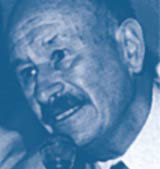Tip your hat to the past
David Bernstein commiserates the passing of an advertising icon who created an archive that will forever be an invaluable reference tool for people in the trade

Jim Davies and I share a passion. He declares himself ‘an inveterate hoarder of graphic ephemera’ (Private View, 21 October). As a governor of the History of Advertising Trust, I am involved in capturing ephemera on the wing. The Hat archive comprises more than two million items of advertising and other forms of marketing communication, from 1800 to the present day.
Davies argues that the act of keeping a piece of graphic design, out of context, changes its meaning. I agree. A poster exhibited in an art gallery is no longer a piece of instant street communication but an object for study.
But can you really judge it as an ad while communing with it? I knew an American creative director who would assess a poster rough by running past it. It was Thomas Carlyle who praised the effectiveness of the affiches of the French Revolution with the now classic definition ‘that he who runs may read’. Running through a gallery, however, may be frowned upon. Instead, you stare and examine, but hopefully not as you would a work of art, noting nuance and detail. Rather, you try to recreate the original context in which the piece was encountered. Its design was almost certainly predicated on movement – the viewer is passing the poster or vice versa – and on little time. In a gallery there is all the time in the world and inevitably the criteria for evaluation shift or are conveniently forgotten. The change of context removes the commercial purpose: the ad becomes, to all intents and purposes, art.
At Christies’ spring auction, Shell posters of the 1930s by the likes of McKnight Kauffer, Tom Eckersley, Richard Guyatt and Hans Schleger each fetched between £2000 and £3800. All of them featured a Shell message above and below the image – for example, These men use Shell… You can be sure of Shell – forming a second frame; the art untouched by commercial content. What to my mind were better posters, ie better advertisements, in which the image and text were integrated into a commercial message, fetched far less, thus confirming Davies’ point about context. Had the auction been held in a corporate location, under the auspices of, say, Dada, would the bids have been different?
The context of Hat – the largest archive of its type in the world – certainly affects the way in which its ephemera is viewed. People visit its building outside Norwich, or its website, www.hatads.org.uk, for a variety of reasons: tracking the history of a company or brand, comparing marketing strategies, checking advertising approaches in a particular category, and so on. Creatives seek stimulus. Academics trace how advertising has developed. Film-makers seek ads of a period in order to add veracity to a set. And social historians have a field day. Ogilvy and Mather is but one company to have entrusted its archives to Hat for safe and professional custody, some 1600 volumes, a veritable social history of the past century, the passing show caught in contemporary images and language.
Ephemera it may be, but nothing quite provides insights into the way people lived, their preoccupations and aspirations as well as advertisements. Ads are not created as social history (heaven forbid), but that does not prevent them becoming such. Similarly, posters are not designed with the art gallery in mind. ‘Graphics,’ Davies reminds us, ‘is about conveying timely information… once its moment is past it becomes something else entirely.’ In the case of Hat’s archive, many different things.
The task of collecting the ephemera, of encouraging agencies, advertisers and institutions to release archival material to Hat, a registered charity, was largely that of one man, chief executive Michael Cudlipp. Last month, alas, after 17 years as Hat’s prime mover, Michael suffered a fatal heart attack. He would have found common cause with Davies and his cardboard boxes of treasures. Had it not been for Michael’s last ditch retrieval of discarded material from oblivion and skips, so much of our industry’s past would be lost.
Hat’s task, as Michael defined it, ‘is to rescue material, to conserve it to the best possible standard and to make it available as cheaply as possible to non-profit clients and at commercial rates to companies and organisations’. The living history that is its archive, available to all, is a monument to its inspirational genius. Though Michael Cudlipp, an ex-Times editor, would have found a more vibrant word than monument.
Please e-mail comments for publication in the Letters section to lyndark@centaur.co.uk
-
Post a comment




